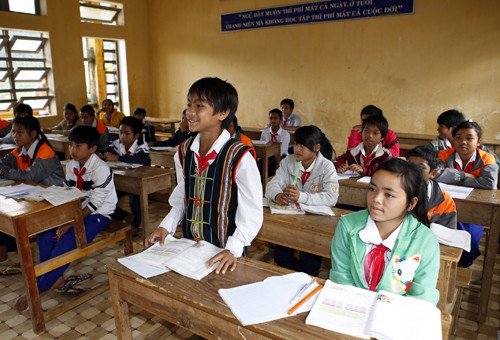Ninh Thuan (VNA) – The south central province ofNinh Thuan has rolled out measures to improve the quality of teaching thelanguages of Cham and Raglai ethnic minority groups with an aim to enhance literacyamong the communities as well as maintain and promote the value of thelanguages.
In the 2020-2021 academic year, Ninh Thuan will continue theteaching of Cham for second to fifth graders in 24 primary schools in areasinhabited by Cham communities, while compiling a Raglai language textbook forprimary schools in Bac Ai and Thuan Bac district where there are large numbersof Raglai ethnics.
Teachers will receive further training in the field, while languageteaching materials will be compiled to help them with the work.
According to Director of the provincial Department ofEducation and Training Nguyen Hue Khai, over the years, Cham has been the onlyethnic minority language officially taught in local schools since 2010.
After 10 years, Ninh Thuan has expanded Cham languageteaching to 24 schools, with 288 classes and 8,126 students by 54 teachers inthe 2019-2020 school year.
Hue held that the teaching of the language has contributedto encouraging students to go to school, reducing the number of school dropout.This is also a practical solution to conserve and promote the cultural value ofCham people, he added.
Hue said that in October 2019, the People’s Committee ofNinh Thuan approved the Raglai language script, which is being used as thefoundation for the compilation of a Raglai language textbook for pilot teachingof the language in some primary schools.
Ninh Thuan has asked for support from the Ministry ofEducation and Training in standardising the quality of ethnic minority languageteachers, investing in reference books, and organising conferences forlocalities to share experience in the work.
Ninh Thuan is home to 34 ethnic minority groups with morethan 144,200 people, accounting for 24.43 percent of the province’s totalpopulation. Of the figure, more than 67,270 people are from Cham group and over58,910 are from Raglai group, accounting for 11.9 percent and 10.42 percent ofthe total population, respectively./.



























